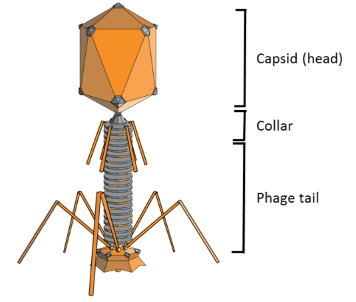Definition of Bacteriophage
A bacteriophage is a class of viruses that is responsible for infecting bacterial cells. They are also termed as phage and bacterial viruses and were first discovered by Twort and Herelle. The name bacteriophage was given by Herelle to such viral entities due to their bactericidal ability. There are thousands of bacteriophages and each phage is involved in infecting a few types of bacteria.
The structure of a bacteriophage is composed of a protein capsid that encloses the genetic material either DNA or RNA. The nucleic acid may be single or double-stranded. Bacteriophages have 3 basic structural forms i.e. icosahedron with tail, icosahedron that lacks a tail, and filamentous form.
View More Genetics Definitions
Related Questions of Bacteriophage
Transduction is sometimes described as a mistake in the bacteriophage reproductive cycle
When bacteriophage P1 causes E. coli to lyse, the resulting
Which component of the CRISPR-Cas system directly recognizes the bacteriophage
The graph shown in FIGURE 8.5 is reproduced from an
The graph shown in FIGURE 8.5 is reproduced from an
The graph shown in FIGURE 8.5 is reproduced from an
The graph shown in FIGURE 8.5 is reproduced from an
The graph shown in FIGURE 8.5 is reproduced from
Show All


